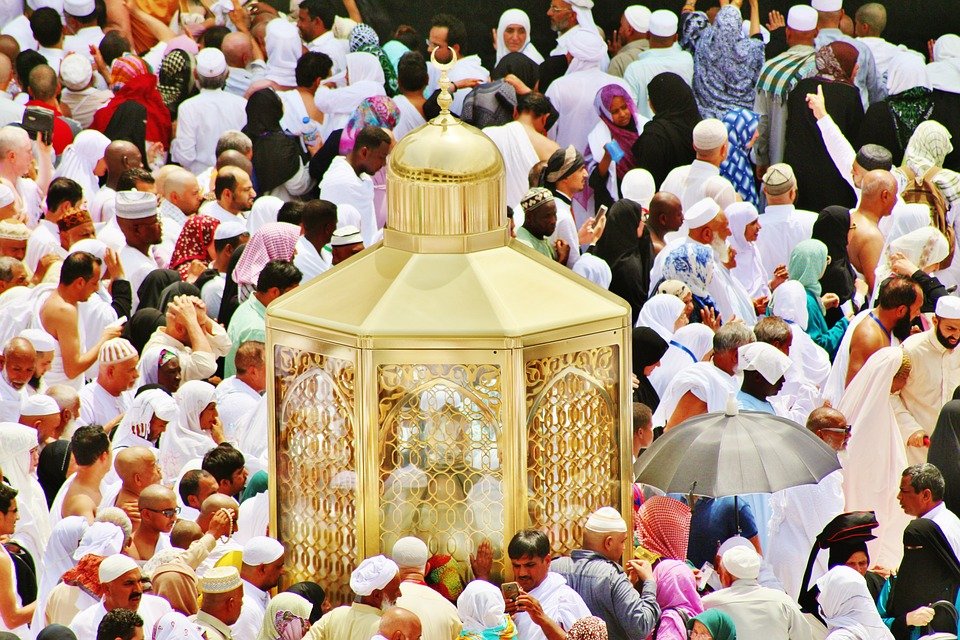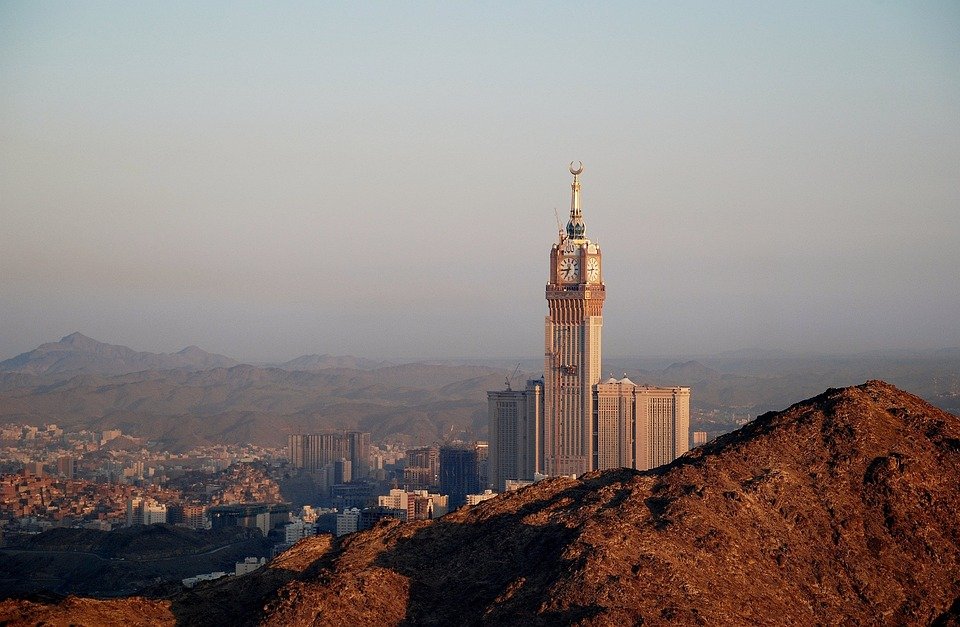You are here to read: Are Men and Women Separated During Hajj? Key Insights Revealed – A Thoughtfully Written Guide Offering Spiritual Wisdom and Travel Advice for Every Pilgrim who is going on holy journey of Hajj or Umrah.
Are men and women separated during Hajj? This question often arises as pilgrims prepare for one of the most significant events in the Islamic faith. In this article, I promise to provide you with a comprehensive guide on understanding the dynamics of gender separation during this sacred pilgrimage. As we explore this topic, you’ll find essential insights that clarify how men and women interact during Hajj and what guidelines exist to ensure everyone can fulfill their spiritual obligations.
In my opinion, understanding whether men and women are separated during Hajj is crucial not only for prospective pilgrims but also for anyone interested in the traditions of Islam. The significance of this topic reflects the cultural and spiritual context of the pilgrimage, highlighting respect and devotion. With over nine years of experience in the Umrah and Makkah, Madinah travel industry, our team at Airlinkhajjandumrah.com is dedicated to providing accurate and relevant information. We aim to shed light on “Are Men and Women Separated During Hajj? Key Insights Revealed.” Through this article, I hope to share valuable understanding that enriches your knowledge of this important journey.
Are Men and Women Separated During Hajj? Key Insights Revealed
Understanding the Essence of Hajj
Hajj is a significant pilgrimage for Muslims, taking place annually in Makkah, Saudi Arabia. Millions of believers gather from all corners of the world to partake in this spiritual journey. This event isn’t just about fulfilling a religious obligation; it’s a time for reflection, forgiveness, and developing inner peace. While we all share the same goals during Hajj, there are essential guidelines that shape how we experience this sacred event.
One key aspect of Hajj is how men and women engage within the crowd. Many people wonder if they are separated during this profound pilgrimage. The answer isn’t as straightforward as it may seem. In essence, men and women have specific roles and guidelines that allow them to participate in Hajj while respecting Islamic principles. This dynamic helps to cultivate an environment of spirituality and reverence. By understanding these principles, we can appreciate how this pilgrimage brings us closer to our faith and fellow believers.
A Unique Experience for All Pilgrims
During Hajj, everyone’s focus lies on worship and devotion. However, this shared commitment does not mean that men and women interact in the same physical spaces throughout the journey. The rituals encourage some separation, promoting respect and concentration. This separation is not meant to isolate individuals but to enhance one’s spiritual experience by reducing distractions.
While performing rituals, men often take specific areas for prayers, while women have designated spaces nearby. This arrangement ensures that everyone can concentrate on their prayers and reflections without feeling overwhelmed. By harmonizing these arrangements, the experience becomes more personal, allowing each pilgrim to connect deeply with their faith.
The Role of the Kaaba: A Sacred Center
At the heart of Hajj is the Kaaba, a sacred structure that stands as a focal point for all pilgrims. The Kaaba captures the attention of every man, woman, and child who walks its surroundings. Pilgrims circle around it in a ritual known as Tawaf, expressing their devotion and love for God. Though men and women participate in this ritual simultaneously, they often found themselves in separate formations.
You're at the middle of this awesome post at AirlinkHajjandUmrah.com through: Are Men and Women Separated During Hajj? Key Insights Revealed. Keep reading, it gets better!
This unique setup allows both men and women to approach the Kaaba according to their comfort level. It ensures that everybody feels at ease while performing the rituals. I believe the arrangement fosters a sense of unity among pilgrims while allowing individuals to maintain their personal space. The Kaaba’s presence radiates peace, reminding us that we are all here for the same purpose.
Rituals that Embrace Unity and Respect
Throughout Hajj, the rituals emphasize unity and respect among pilgrims. Men and women engage in essential rites such as standing at Arafat and the symbolic act of stoning the devil at Mina. While men and women may participate in these activities together, certain aspects ensure they maintain their distinctiveness.
For instance, the standing at Arafat, one of the most important parts of Hajj, occurs in shared spaces. However, during this sacred time, individuals reflect and pray in their own zones. This practice allows everyone to engage deeply without feeling discomfort. In my view, it strikes a beautiful balance between communal spirit and personal reflection.
Social Dynamics During Hajj
The social dynamics of Hajj reveal much about the roles of men and women in spiritual practices. While safety is paramount, social norms prevail during the pilgrimage. Men and women interact with one another, guided by principles of respect. However, this interaction often happens within context-rich settings like group activities or shared accommodations, ensuring all maintain their dignity.
These dynamics also reflect broader societal attitudes. In many places, women may find a sense of empowerment during Hajj. They assume active roles, supported by their male counterparts and fellow pilgrims. I find this encouraging. It shows that devotion and faith transcend gender while promoting unity.
Overcoming Misunderstandings
Misunderstandings about men and women’s separation during Hajj can often stem from cultural differences. Many people believe that separation suggests inequity, but this couldn’t be further from the truth. In fact, the guidelines serve both men and women, fostering an environment of devotion and reflection that respects each pilgrim’s needs.
People unfamiliar with Islamic traditions might question the necessity of such arrangements. However, understanding the spiritual significance behind these practices offers a new perspective. It’s about creating an atmosphere where faith thrives, enabling pilgrims to immerse themselves fully in their worship without distractions.
Embracing Diversity in Worship
As we reflect on whether men and women are separated during Hajj, we recognize that every individual’s experience adds to the overall beauty of this pilgrimage. The rituals, hierarchies, and structures may shape how we engage, but the heart of Hajj beats for everyone. Each person, regardless of gender, embodies devotion in their unique way, contributing to the collective experience.
In conclusion, while men and women have designated interactions during Hajj, these arrangements serve to enhance everyone’s spiritual journey. We all share the same intention: to reconnect with our faith, seek forgiveness, and pray for harmony. Understanding this dynamic allows us to appreciate the rich tapestry of experiences during this extraordinary pilgrimage.
That wraps up Are Men and Women Separated During Hajj? Key Insights Revealed. Thanks for sticking with us till here! Share this: Are Men and Women Separated During Hajj? Key Insights Revealed with your friends.
Check our homepage at Air Link Hajj & Umrah for more awesome updates.
Some interesting posts are: 1: Umrah Mubarak, 2: When is Umrah closed 2026?, 3: When does Umrah start after Hajj 2026?
Mushu, an experienced Saudi Arabia traveler and writer, shares insightful tips and spiritual reflections to enhance Hajj and Umrah journeys for fellow pilgrims. He has been to Makkah and Madina from 2016 to 2023 many times and his posts will reflect this.







